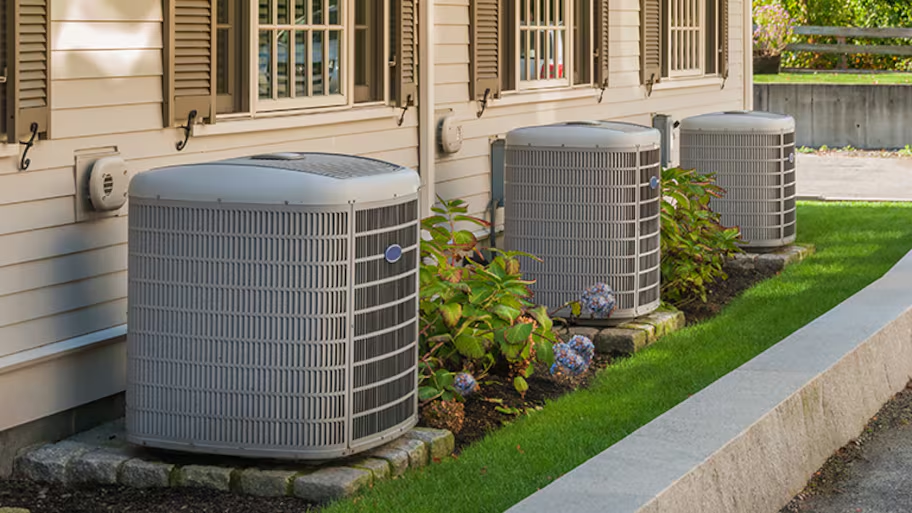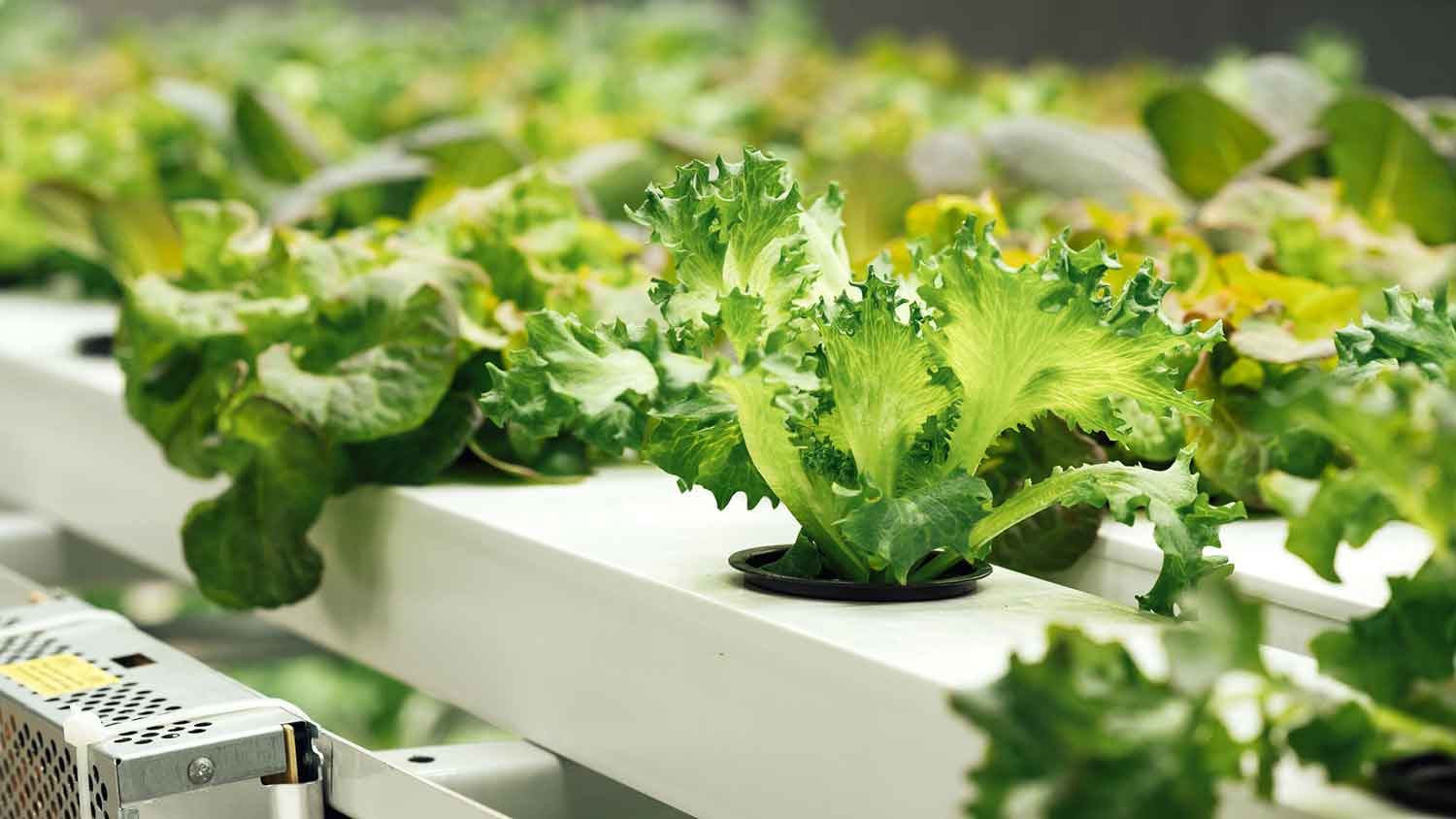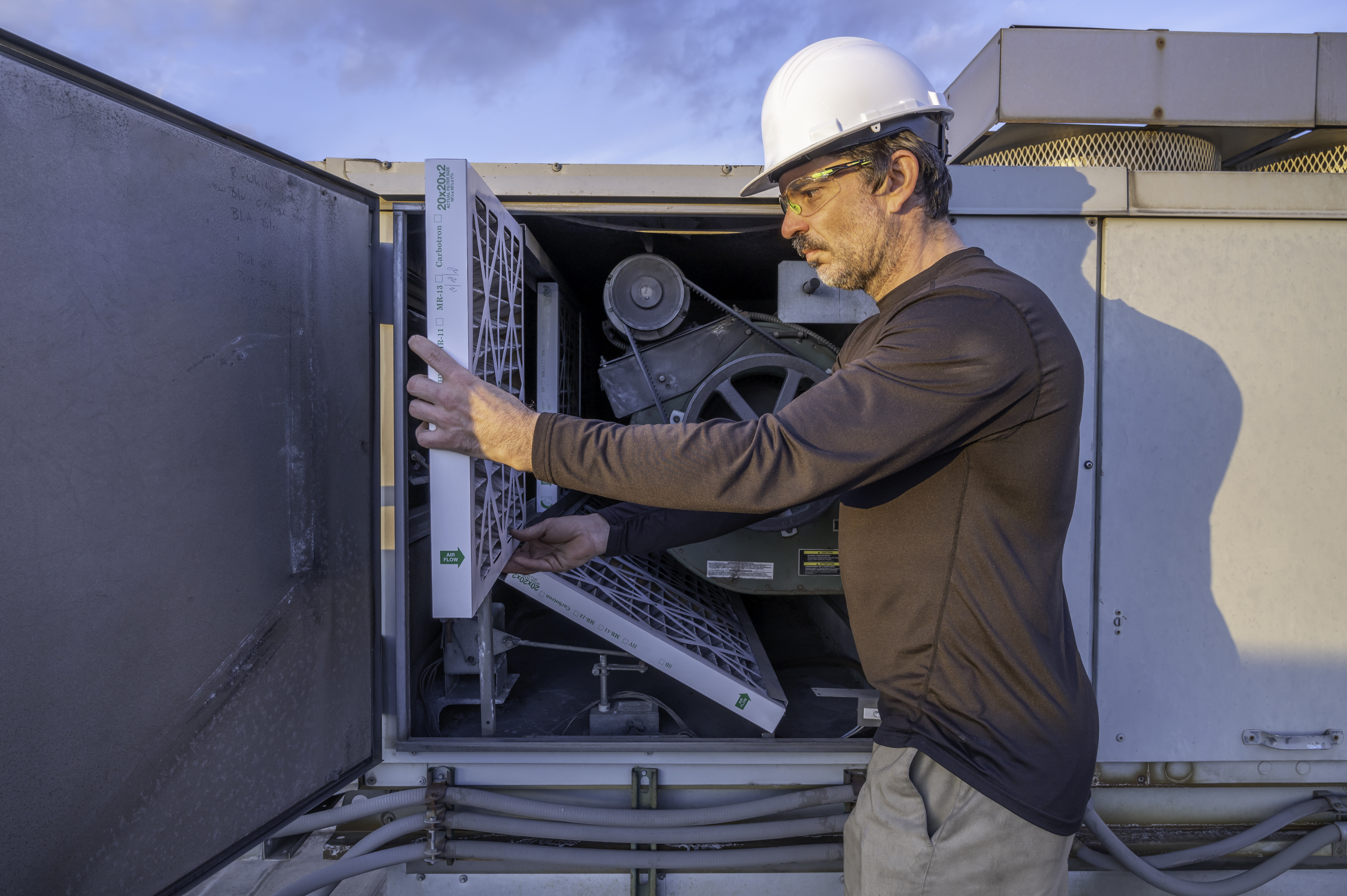
Explore how much an AC compressor costs to install based on cost factors like it’s type, brand, size, and local labor rates.
Winters just got more comfortable


Installing a whole-house humidifiers can eliminate dry indoor air conditions that forced-air and heat pump HVAC systems generate. By injecting moisture into your house through ductwork, humidifiers reduce airborne dust, are beneficial for indoor plants, and just make your air more pleasant. Let’s review the ins and outs of installing a whole-house humidifier and when to hire a local humidifier installer to tackle the task for you.

Installing a whole-house humidifier begins with a little bit of prep work. Learn about the various types of whole-house humidifiers and choose the appropriate one for your home and its size. You should also measure your home’s humidity to get a baseline idea of where your levels are.
There are several types of whole-house humidifiers to meet the needs of almost any home. Houses without forced-air central heating aren’t equipped with ductwork and will need a self-contained whole-house evaporative humidifier or multiple room-sized units.
Homes with forced-air or central heat pump HVAC with ductwork throughout the house can choose from fan-powered, steam, or bypass models.
Houses over 4,000 square feet will do well with a steam humidifier, while a fan-powered unit is best for homes that have limited access to the ductwork near the furnace. This guide walks you through the installation steps for an evaporative bypass humidifier which is the most common type available.
The furnace-mounted humidifier you choose typically will likely come with every part you need, as well as installation directions. However, depending on what's in the box, you may need a few additional materials, such as extra-long water supply tubing or a specific plumbing valve for your system, if necessary. These details can vary from one type and manufacturer to the next.
This guide will give you an overview of the process but consult the manufacturer's directions in the package for specifics.
In many cases, obtaining a permit isn’t necessary for installing a whole-house humidifier, but it’s worth checking with your municipality before starting work to be sure. Hiring a professional humidifier installer ensures that your materials and process adheres to the latest safety and permitting regulations.

You should find a template for cutting holes in your ductwork in the box with your whole-house humidifier. Read the manufacturer’s instructions to determine the best installation location for your humidifier and the accompanying humidistat.
For the humidifier, choose a location that best fits the instructions and has easy access to a water source and a drain. Level the template in place and use a marker to trace it onto either the supply or return air duct.
Remove the template and use a drill to make a pilot hole on one of the traced edges. Then, cut out the template shape from the duct using aviation snips and protective gloves to keep your hands safe from sharp metal edges. Use the screws in the installation kit to affix the humidifier’s mounting plate and foam gasket into the hole.
Next, you’ll deal with the humidistat, which monitors the airborne water content and allows you to choose a humidity setting. Choose a location for the humidistat on the return air duct that fits the manufacturer’s directions and is easily accessible. Repeat the tracing and cutting method of the humidifier body for the humidistat using its template.
Install the humidistat body and gasket into the new hole with the screws in the installation kit. Your whole-house humidifier needs to wire to electricity. Many models only require plugging into an outlet, while others may require basic manual wiring, in which case you may feel more comfortable having a local electrician perform this step if you’re unfamiliar with electrical circuitry.
The wiring process will vary depending on your model and may include an external transformer or harness. Turn off the electricity to the furnace, if necessary, or the outlet, and closely follow the wiring directions for your specific humidistat. Ensure that the power is off to the circuit you’re working on by testing with a non-contact or probe-type electrical tester before working with electrical components.
Continue following the wiring directions to connect the wires from the humidistat to the humidifier. If your humidifier has an external pressure switch, install that now by drilling the appropriate holes and making the connections following the instructions.
On the bottom of your humidifier is a drain, and your installation kit may have a plastic tube in it for that purpose. If not, use 3/4-inch PVC pipes and fittings for a drain. Extend the hose or pipe to the nearest floor drain or a condensate pump. If your furnace already has a drain, you can install a pipe tee and share the line.
Most humidifiers can use either hot or cold water, treated or untreated. Starting at the humidifier, insert the water supply line that came with your model into the compression fitting on the unit and tighten it with an adjustable wrench. Extend the supply line to a nearby water pipe.
Connect the line to the saddle valve’s fitting. Ensure the saddle valve is off and pierce and tighten the saddle valve to the supply pipe. If the building code in your location doesn’t allow saddle fittings, turn off the water to the house and install a tee fitting in the supply line.
The vent needs to stretch from the supply or return duct. Trace the vent bypass collar onto the duct opposite the humidifier body. Cut out the hole and use the kit screws to secure the collar before attaching the flexible duct to the collar and the humidifier body.

Turn the water and the electricity back on, open the saddle valve, and check for leaks. Install the filter material into the unit and close the humidifier cover.
Installing a whole-house humidifier has several benefits, including increased comfort, fresher air to breathe, and energy savings. Whole-house humidifiers keep enough moisture in the air to prevent dry skin and chapped lips. They can also help reduce the chance of developing a respiratory infection due to irritated nasal and airway passages.
Humidifiers also help keep the air warmer in the winter months, which translates to lower heating bills. They also offer set-it-and-forget-it features that let you program the humidifier for optimal humidity levels. The units are also low maintenance compared to traditional HVAC systems. Finally, a unique perk of a whole house humidifier is less static electricity in the air.
Installing a furnace-mounted humidifier yourself will cost you only the price of the unit, any extra installation materials, and an afternoon. A whole-house humidifier costs between $100 and $300; additional materials could cost around $50 if necessary.
Some DIY skills are necessary to install a humidifier. Although the plumbing and electrical connections aren’t particularly complex, it can be intimidating for those without some experience in these areas. Incorrect installation can result in water damage or, in extreme cases, create an unsafe situation in your home. In many cases, it’s better to call a professional who installs humidifiers. If you’re not comfortable with this kind of work, there’s no need to worry: A nearby humidifier installer or HVAC company near you can provide more information and installation.
From average costs to expert advice, get all the answers you need to get your job done.

Explore how much an AC compressor costs to install based on cost factors like it’s type, brand, size, and local labor rates.

HVAC replacement costs depend on a lot of factors, like unit type, size, and labor. See what you can expect to pay for HVAC replacement here.

Ductless heating and cooling system costs vary depending on size, type, and energy efficiency. Their installation is likely to lower your energy bills.

Tackling unwanted odors from indoor plants can be tricky. Learn how to use a carbon filter in your duct fan to improve air quality.

Wondering who to hire for swamp cooler installation? Learn when to call an HVAC contractor, electrician, or handyperson, and what to expect.

Do you have a clogged AC drain line? We dig into the reasons behind those pesky blockages and how to clear them for optimal AC performance.